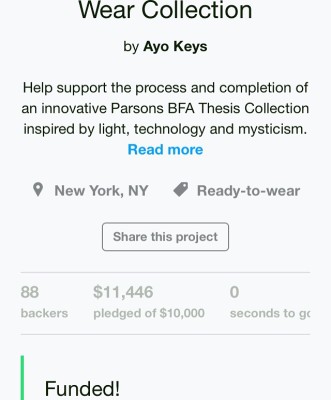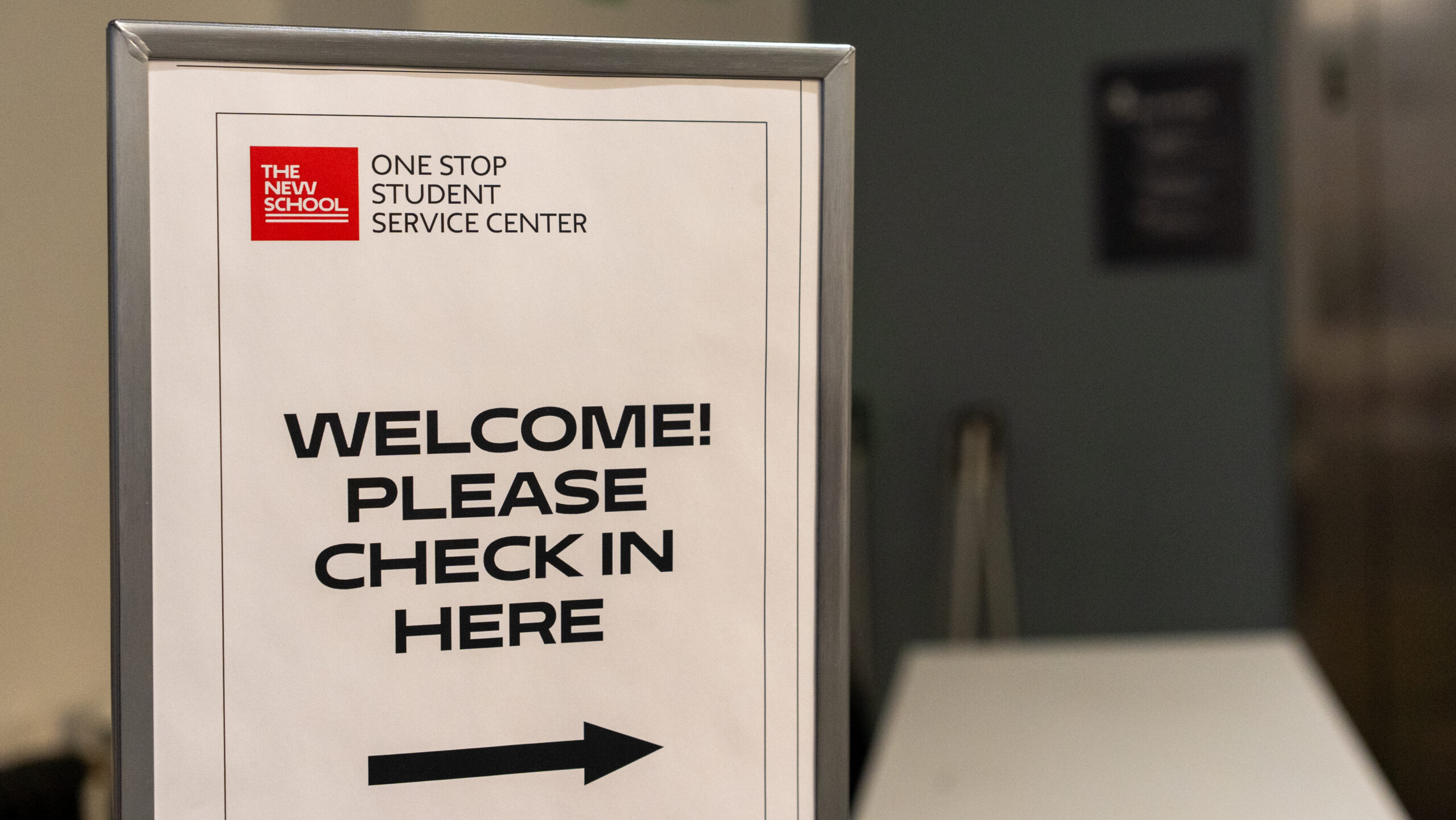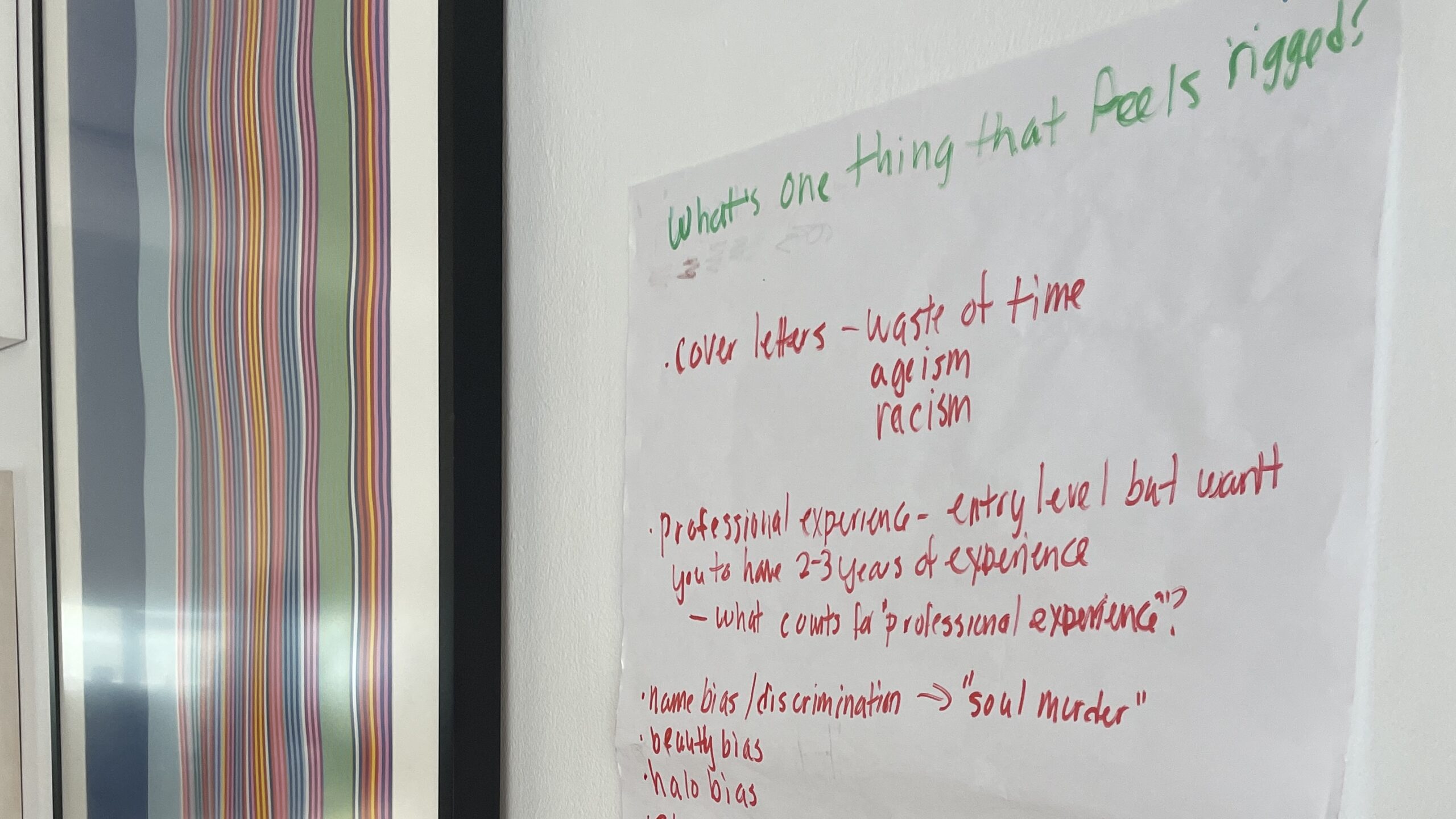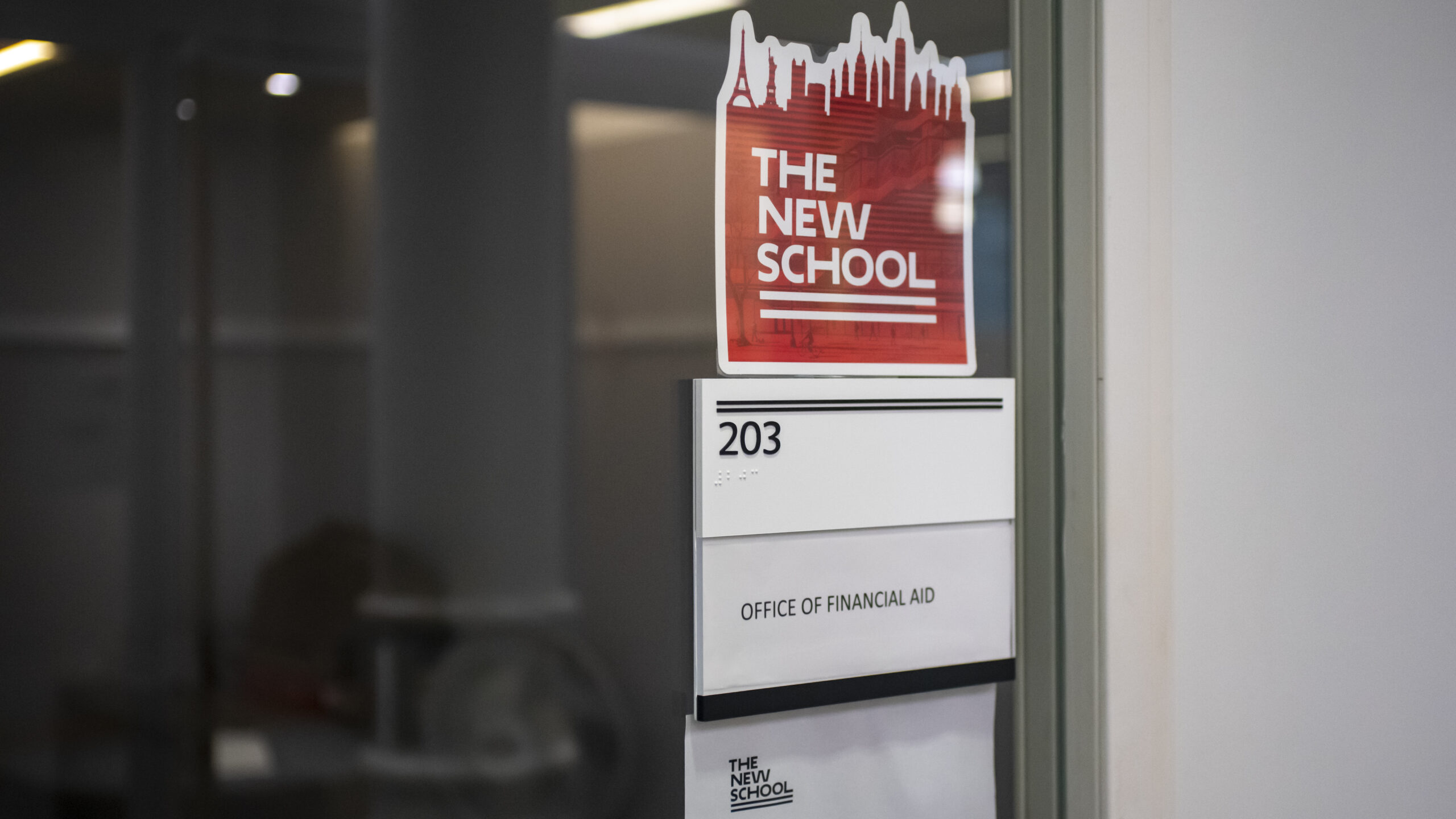If working on my senior thesis day and night wasn’t stressful enough, I also found myself overwhelmed by the insane cost of trying to produce what I had spent so much time working on. Luckily, thanks to friends, family, and the internet, I was able to raise over $11,000 to produce my senior Fashion Design BFA thesis collection.
Whether you’re working on your thesis in fashion design, film or jazz and need $200 or $20,000 to make it happen I’ve compiled a list of tips to help you crowdfund the senior thesis of your dreams.
1) Research two to three months before launch.
Kickstarter, Indiegogo, and Go Fund Me are just a few of the many Crowdfunding sites that you can use to fund your dream thesis. Each site has a different audience, set of rules, fees, and guidelines. In the past New School students seeking major bucks have used Kickstarter to successfully fund their thesis projects. I was able to fund my own thesis with the sites all-or-nothing countdown style fundraising. Look at as many projects as you can and try to figure out what worked and what didn’t work and how you can use those things in your favor.
2) Pre-production one to three months before launch.
A good looking crowdfunding page takes a lot of work. Even if you don’t have a prototype or finished product available you’ll want to make sure people know that they are investing in something worthwhile. Try working on a different section of the page every week or day so that you have time to edit and add more if you can. It can help to summarize the important parts of your research and process, add examples of your past work, explain where the money is going, the kinds of rewards you might offer, and the risks and challenges of the project. It can be a lot of work on top of other schoolwork, but doing a bit of it every day will likely help you stay on track.
3) Make a video one month before launch.
Having a video makes your crowdfunding campaign a thousand percent more awesome! If you are camera shy, voice over could even do the trick. You just have to show people who you are and what you are trying to do. Even if it’s only 30 seconds.
It can help to time your video to a song you like to give it a decent pace or flow. Just piece together some iPhone-recorded videos and photos from your research and process and edit the entire thing in iMovie. Remember to be as informative and as honest as possible. You want someone in Shanghai to care as much about your project as your best friend does after watching your video.
4) Pick rewards three weeks before launch.
You want to make your supporters feel appreciated and that’s where rewards come in. Make an effort to offer reasonable rewards that won’t take a massive chunk out of what you fundraise. It’s tempting to offer logoed pens and pencils but think: Would you want that as a reward if you helped someone? Sometimes, if you can, giving the supporters a copy of your final project is the best reward if it’s something that you can send in an email or fit in a flat rate box. If that doesn’t work, offer a small event, handwrite a thank you note or name an object/character/product after them.
5) Share and edit two to three weeks before launch.
Take the time to carefully edit everything you wrote. You spent all of this time getting ready that last thing you need is for a sentences make sense no when you’re asking people for money. Kickstarter allows you to share a preview of your campaign via a link before you launch the project. Ask everyone you trust to help give your page a thorough read. Ask a close friend, family member, or even a favorite professor.
6) Launch.
Make sure that your account information is correct before launching your project and that you have read all of the FAQ’s and guidelines as well. Triple check that you will have enough after fees and the cost of rewards to make your project. Add as many description and category tags as you can think of (most sites sort projects by description or type kind like film, literary, tech, fashion, etc) and prepare for the flood of money.
7) Public Relations Use social media to your advantage.

Post about your project every day on all of your networks. Slide into everyone’s DM’s, even strangers. Comment on photos with shameless self-promotion. @ people on Twitter. Post in old Facebook groups and email old teachers, internship bosses, old camp friends, the camp counselors, the camp directors. Don’t be shy if you need money. Get your mom or dad to tweet at journalists. If you’re lucky (like me), your Kickstarter campaign might end up being featured on The Huffington Post or later on Super Selected.
8) Track your project’s progress every few days.
There are sites that let you track how close you are to your goal and how much you need to make each day before the deadline in order to be successful. Don’t get too hung up on how much you have left to make. Most campaigns start really well, and then for days or weeks make very little. Just don’t give up. But also, be honest with yourself. If you have three days left in your campaign and you’ve made less than 25 percent, it’s probably best to hit pause and rebrand and relaunch your campaign or pick a different crowdfunding site.
9) Celebrate deadline day.
If you made your goal, congratulations! If you didn’t that’s ok. Try to figure out what went wrong and relaunch your project in a few weeks. Once you’ve made your goal make sure to thank all of your supporters. Even the people who couldn’t donate. Triple check that you have the right bank account on file for the money to be transferred after fees are taken out. You may even want to set up a separate checking account so that you can track your spending separate from your personal account.

10) Post updates every few weeks.
The people who supported you want to know that you’re still working hard and putting their money to good use. Post thank you updates, short videos or silly GIFs. Post preview photos of your work in progress and be honest with your supporters. Are things going well? Are you crazy tired? Did one thing work and another thing fail? They want to know and what’s more most of your supporters will offer to help if you are having trouble. They invested in this project and in you and they want you to succeed. Don’t wait until the last minute to ask for help.
11) Finish the end.
Once you’ve completed your thesis make sure your backers know. It may even be worth while to post a thank you video where you show the finished product or read a passage from your exquisite research paper. Make sure you take a break and write a list of everything you’ll need to make your rewards and send them out. Kickstarter has list of shipping services and companies that make small goods like t-shirts or offer bulk printing. If you can’t send the rewards when you thought you could then pick a new date and let the backers know that you’ve hit a road bump but that their rewards are coming soon. But what really matters is, you finished!!!
Ayo Keys is currently earning a dual degree in Fashion Design and Journalism + Design at The New School. Born and raised in West Philadelphia she enjoys thai food, large issues of Vogue, anything rose gold and knitting. She has an obsession with art direction, well designed fonts and hopes to one day become a Creative Director.







